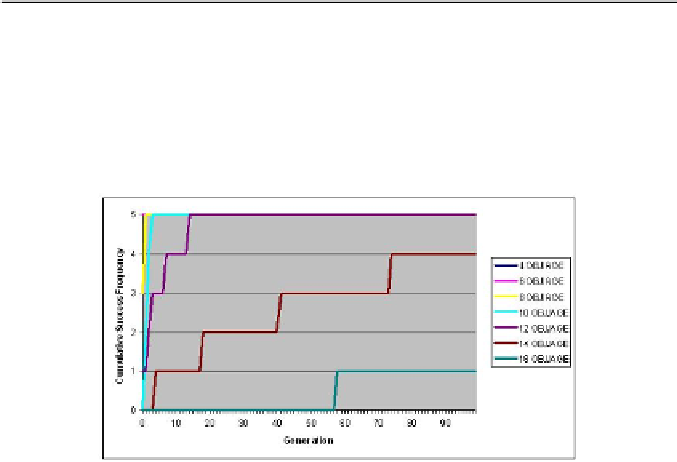Information Technology Reference
In-Depth Information
-
S
=
wall,box,ball,dice,feather,glass,pencil,sharpener,cherry,orange,
apple,pear,strawberry,lemon,melon,nut
{
}
-
M
=
{
WA,
BO
,
BA
,
DI
,
FE
,
GL
,
PE
,
SH
,
CH
,
OR
,
AP
,
PR
,
ST
,
LE
,
ME
,NU
}
When a new object or agent is added it appears in the environment and a new
rule is added to the grammar in order to allow that the new symbol can be
included in the vocabulary. With regard to the experiments we address a set
of 5 executions. On each execution we could add two new objects and two new
agents each time. The evolutionary parameters were established as table 1 shows.
Table 1.
Evolutionary Parameters
Population size 20
Maximum generations 100
Learning steps 10
Crossover, Mutation and Duplication probabilities 0
.
9;0
.
03 ; 0
.
05
5R su s
Figure 3 shows the cumulative success frequency. This value measures the prob-
ability of finding a solution to a problem in a specific number of generations.
Fig. 3.
Results of Cumulative Success Probability after 5 executions
In the case of 4, 6, and 8 symbols the incremental model is able to find a
solution just in the first or second generation. For 10 objects a solution is always
found before the fourth generation. The incremental model found a solution be-
fore the fourteenth generation when 12 objects and 12 agents were situated in
the environment. In the case of 14 and 16 objects the incremental model was
not able to find a solution in all the executions but it performs acceptably with
14 objects because it found a solution in four executions (success 80%). However,













Search WWH ::

Custom Search